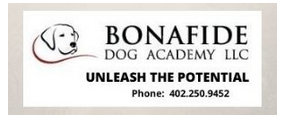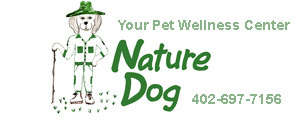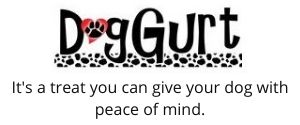- Do you subscribe to Dharma Dog Training’s Newsletter? You should.
- A Unique Campaign from The Humane Society of the United States
- Rabid bats in Omaha- Stay safe, prepared with these tips
- Springtime Activities in Omaha
- Mill Dog Monthly from Bailing Out Benji
- World Spay Day, Legislative Alert in Nebraska
- Attend the Nebraska Rescue Council’s monthly meeting this Saturday
- Five Hard-to-Ignore Reasons to Adopt!
- Paws in Pink to Benefit Breast Cancer Foundation
- VCA, Inc. Acquires MidWest Vet Specialists from Kansas State University
4 Healthy Pet Food Trends to Talk to Your Vet About Before You Try

As a responsible pet parent, you want to provide your furry friends with the most nutritious meals to give them the long, healthy lives they deserve. As new food trends come out, you may think about switching your pet’s current diet to the latest one. However, if you look at these fads, each promises to be the best. So how do you decide which one really is the dominant choice?
Unfortunately, many new trends are based on diets that work for humans. While specific diet changes are acceptable for people, pets are physiologically distinct from humans. For the most part, people can eat what they want without health repercussions; however, pets’ diets need to be strict, as there are many foods they shouldn’t have. Additionally, every animal is unique, so what one can ingest, another may not be able to due to allergies or stomach sensitivities.
If you’re interested in letting your four-legged friend try a new food trend, you should discuss this diet change with your vet first, as your vet not only knows the ins and outs of food safety but also is aware of your pet’s health issues. Here are four popular diets to let your pets try as long as your vet gives you the thumbs up.
1. Grain-Free
Grain-free pet food is produced without grains, such as wheat, barley, rice, oats, or corn. This carbohydrate source is generally replaced with legumes or potatoes. Switching your pet to this diet is mainly beneficial if your furry friend suffers from a grain-related allergy, which is a rare ailment.
While pets don’t need grains to have a fulfilling life, most cats and dogs should be on a diet that resembles what they would eat in the wild. For example, carnivores eat mostly protein; however, they also get additional nutrients, including grains, because they eat their entire prey, from the bones to the stomach contents.
Although changing your pet’s diet to a grain-free option is helpful for some pets, it may be harmful to others. Going grain-free may cause your four-legged friend to miss out on certain proteins, fatty acids, amino acids, and fiber.
2. Raw Food
Feeding your pet with a raw diet has several perks, including healthier skin, shiny fur, improved joint and bone health, and a stronger immune system. Raw meat may even give your pet more energy.
However, this raw food diet may not provide your pet with the well-balanced diet it needs to thrive fully. If your vet agrees that this diet is a good idea, you’ll have to discuss alternative ways to provide your pet with essential nutrients. If your pet lacks certain vitamins and minerals, it may develop deficiencies.
There are other risks associated with this trend. Uncooked meat can lead to bacteria-related illnesses, such as Salmonella, which can cause vomiting, diarrhea, or even death. Your furry friend may also choke on animal bones, or these bones could ultimately cause an intestinal blockage or an internal tear.
3. Fresh Food
Just like making yourself wholesome, healthy meals, feeding your pet a fresh food diet with natural ingredients can be beneficial. It can aid in your pet’s overall wellbeing, ranging from fresh breath to better eyesight.
Unfortunately, prepping your furry friend’s meals is time-consuming, and it may require extra thought to ensure you’re able to provide all the essential nutrients your pet needs as part of its daily diet. Your vet can help you set up a proper menu if you’re interested and have the time to manage your four-legged friend’s meals.
If you’re unable to make fresh food but still want your cat or dog to try this diet, opt for a pet delivery service. These businesses send prepackaged food, which includes nutrients your pets require. Most services can make a formula specific to your furry friend’s weight, age, and breed and even take allergies into account. While starting your pet on this meal plan may be an appealing endeavor, you should be prepared to spend a little extra money, as it is more expensive than kibble.
4. CBD Products
Starting your pet on a diet that includes CBD products may help with several ailments, including anxiety, seizures, joint pain, inflammation, cancer, and appetite. While you may find treats and other pet products readily available on store shelves, you should wait to purchase them until you talk to your vet because CBD contains trace amounts of THC. Additionally, it can alter the effectiveness of other drugs your pet is taking.
Scientists have performed many studies regarding CBD and human consumption. While the results appear promising, the verdict is still out on its effectiveness on pets, as these studies are ongoing. Keep in mind that some pets have positive results from using CBD products, whereas others suffer from negative symptoms, such as lethargy, diarrhea, dry mouth, itchiness, and upset stomach.
Choose Wisely
Don’t let good advertising be the reason you let your pet try a new diet trend. Marketing can make any product look appealing, even if it’s not a healthy option.
Whether you’re looking to purchase cat or dog training treats or try a new food trend, first discuss these options with your vet, as your vet has experience and education to back up their reasons why a product may or may not be a good idea.
Your vet wants to ensure your pet has the best life just as much as you do and will give you honest advice. If you can’t find a vet-advised pet food trend, you should reconsider switching your four-legged friend’s diet.
Image 1: https://unsplash.com/photos/2Cl0lX_4bag
Latest News
-
Join Us at Pick A Pooch 2025: A Fun-Filled Weekend for the Whole Family
A Fun-Filled Weekend for Pet Lovers and Families Alike Mark...
- Posted 1 year ago
- 0
-
Beardmore Presenting Sponsor At This Years Pick-A-Pooch event
🐾 We are thrilled to announce that Beardmore Subaru is...
- Posted 1 month ago
- 0
-
How Having A Pet Can Change Your Life
Having a pet can open your heart in ways that...
- Posted 3 months ago
- 0
-
How To Improve The Life Of Your Senior Pet
Do you have an elderly fur baby and want to...
- Posted 3 months ago
- 0
-
Springtime Activities To Enjoy With Your Furry Friends
Are you preparing for warmer weather and want some ideas...
- Posted 4 months ago
- 0
-
Pros And Cons Of Microchipping Your Pets
Have you considered whether your pets should be microchipped and...
- Posted 5 months ago
- 0
-
The Best New Fun Toys For Dogs And Cats
The Best New Fun Toys For Dogs And Cats Did...
- Posted 5 months ago
- 0
-
Heartfelt Ways To Show Your Pet You Love Them
Did you know there are more ways to show your...
- Posted 6 months ago
- 0



















You must be logged in to post a comment Login